“European players are soft.”
That backwards mindset is an epidemic in the NBA that has affected everyone from the great Arvydas Sabonis to his son, Domantas. The stigma surrounding players entering the league from overseas has existed since the day the first foreign-born player took an American court, and has only been re-enforced by flops like Darko Miličić and Andrea Bargnani. It was generally accepted among even the most educated basketball enthusiasts that selecting a foreign player in the draft carried a much higher risk than picking up a home-grown, NCAA athlete.
This manner of thinking was what stopped the league’s executives from drooling over Real Madrid star Luka Dončić like they probably should have in the months leading up to the 2018 NBA Draft. There were plenty of fans and analysts who properly understood the unparalleled skill and potential possessed by the Euroleague MVP and champion, but there were just as many that allowed their bias against European prospects to cloud their mind.
Luckily, the Dallas Mavericks are a team that has experienced their fair share of success with a “soft,” European player at the helm. With Dirk Nowitzki entering his final season, the Mavs swapped picks with the Atlanta Hawks to grab Dončić, sending Trae Young to Atlanta. Young has developed into a phenom in his own right, but his production doesn’t come close to topping Luka’s. Few sophomores in NBA history have.
After a strong ROTY campaign, Dončić’s level of play has skyrocketed this season. He’s averaging close to a triple-double with around 29 PPG, 9 RPG and 9 APG a night. He does this while boasting a lethal 53.1 eFG%, and being one of the most well-rounded players in the sport. The skills he truly excels at are a testament to his work ethic: passing, ball-handling, and shooting are all disciplines that you don’t have to be an athletic monster to master. Luka has combined them all, along with elite size and speed, to become one of basketball’s best players and a virtual lock for an All-NBA First team nod at just 21 years old.
But what about the Mavericks as a whole? Are they experiencing the team success they had hoped for when they moved up to snag the “docile,” European?
Ahead of the NBA’s restart in Orlando, Dallas currently sits at the 7th seed in the Western Conference, but they’re 13 games above .500 and only 4 games behind the 3rd seeded Nuggets. With a strong showing in the final eight regular season contests and some stumbling by those above them, the Mavericks could quickly shoot up in the standings. Even if they don’t, it’s safe to say that no top seed is going to look forward to playing them in the first round.
But how did they get here? A large part of their success this season has come from their offense, which leads the league in offensive rating at 115.8. Second place is Houston at 113.4. Dončić is obviously the cornerstone of their offensive attack, but you don’t become the statistically best in basketball behind a single player. So what makes Dallas’s offense so potent? I’m glad you asked. Today, we’ll break down the Mavs high-scoring antics, Luka’s hand in them, and how they can succeed not just in Orlando, but for years to come.
Ridiculous from Range 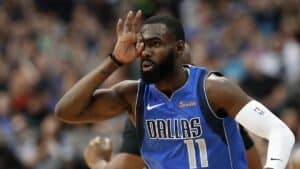
First and foremost, the most obvious factor in Dallas’s offensive success is their lethal shooting from beyond the three-point line. Ever since the Steph Curry-led Warriors helped revolutionize the role that the shot plays in modern basketball, many teams have been scrambling to either copy Golden State’s championship-winning approach or craft their own, mad-scientist version of it (see the Rockets and Mike D’Antoni for the latter). Rich Carlisle, the Mavs head coach, is one of the best minds in basketball, and has utilized his team’s personnel to take full advantage of the new league craze.
As a team, the Mavs shoot 37% from beyond the arc, good for 8th in the league, but that doesn’t begin to tell the full story. They take, and make, the second most threes in the league, trailing only Houston in both categories. The Mavericks’ real strength, though, is the fact that they almost always have five capable shooters on the floor at any given time. Below are Dallas’s 12 highest MPG players along with their 3P%:
-
Luka Dončić- 31.8%
-
Kristaps Porzingis- 34.9%
-
Dorian Finney-Smith- 37.4%
-
Tim Hardaway- 40.7%
-
Dwight Powell- 25.6%
-
Maxi Kleber- 37.4%
-
Seth Curry- 45.3%
-
Delon Wright- 38.5%
-
Jalen Brunson- 35.8%
-
Justin Jackson- 29.8%
-
J.J. Barea- 38.2%
-
Courtney Lee- 44.7%
See what I mean? Only two players in Dallas’s entire 12-man rotation shoot under 30% from three. One is Dwight Powell, a Center who only played 40 games this season, and the other is Justin Jackson, whose role is not to score. The rest of the lineup are all deadeyes from deep, with 7 of them exceeding 37%. The clubhouse leaders are Seth Curry, whose namesake needs no introduction, Courtney Lee, who shoots low volume but is still a serious threat, and Tim Hardaway, who has come a long way from being jumped over by Giannis Antetokunmpo during his time with the Knicks.
Dončić’s pinpoint passing is the key that unlocks many of Dallas’s excellent looks from deep. He’s such a threat from everywhere on the court that the defense is essentially forced to collapse around him, giving the rest of the Mavericks the sliver of space they need to connect from range. Porzingis is perhaps the most wily and unpredictable of Dallas’s shooters, as he dominates in the paint and mid-range, but is also unafraid to unload from a few feet behind the three-point line. Several times this season he’s received an outlet pass from Dončić at the end of a quarter and knocked down a soul-crushing triple, giving Dallas momentum going into the next period.
Examples can be found at 1:07 against the Clippers, 2:15 against the Heat, and 2:29 against the Raptors in the following House of Highlights video: https://www.youtube.com/watch?v=weuDALBXlW8
A huge 46.1% of Dallas’s shots come from deep, including 44.2% of Dončić’s. Everyone from their superstar duo to their backup big men are capable of hitting the three-ball, and that factor is one of many that makes the Mavericks so dangerous heading into the playoffs. Hardaway is the true X-factor, as his shooting ability has been one of the brightest non-Dončić spots on the Mavericks all season. He shoots about 7 threes a game and cans 3 of them, a stroking level that could make him one of the biggest surprises in Orlando if he maintains it.
Dallas’s primary identity may be as a 3-point shooting team, but you don’t reach the league’s top offensive rating by just being able to hit from deep. What other tricks do they have?
Potent in the Paint 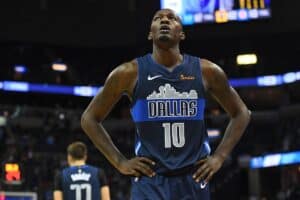
Most modern rosters have a plethora of shooters, but not nearly as many as Dallas. In a similar way, most modern rosters possess elements of positionless play and oversized playmakers, but not to the degree that the Mavericks do. Their most common starting lineup this season was Dončić, Hardaway, Finney-Smith, Powell and Porzingis. This will also be the one they deploy in Orlando, as the other variations were mostly due to Powell being injured. The average height of this group is over 6’7”, with the 6’7” Dončić and 7’3” Porzingis bookending the lineup with massiveness. This length aids them most defensively, where the Mavs about average, but it also helps them craft a strong post game to compliment their perimeter escapades.
According to Basketball Reference, the Mavs take about 54% of their shots from inside the arc, which is good for fourth in the league. A large portion of these are from Dončić drives, as well as slams from Powell and Porzingis, but the rest of the Mavericks also have a place in the painted area. Finney-Smith in particular is very lanky with a 6’11” wingspan, and can soar with the best of them with his 35.5’ vertical. These qualities make him an adept dunker as well, and despite his status as a relative unknown in the grand scheme of the league, he’s an invaluable asset to Carlisle and one of the most entertaining players in basketball.
In a similar ilk to the team that directly follows them in ORTG, the Rockets, the Mavs have a hyper focus on rim shots when they’re not racing to the 3-point stripe. Below are Dallas’s 12 highest MPG players and the percentage of their shots that come within 0-3 of the basket:
-
Luka Dončić- 25.2%
-
Kristaps Porzingis- 18.7%
-
Dorian Finney-Smith- 32.6%
-
Tim Hardaway- 13%
-
Dwight Powell- 67.7%
-
Maxi Kleber- 29%
-
Seth Curry- 9.2%
-
Delon Wright- 36.5%
-
Jalen Brunson- 17.8%
-
Justin Jackson- 19.3%
-
J.J. Barea- 26.3%
-
Courtney Lee- 17.1%
While these raw percentages may not be as jaw-dropping as the three point ones were, it’s worth noting that a large chunk of these players’ shots are from already being siphoned away to the three-point line. Even Dončić and Porzingis, who are two of the few stars that still value the midrange jumper (they take 23.4% and 12.4% of their shots from 3-10 feet, respectively) still take an average of about 22% of their shots at the bucket between them.
Powell, Finney-Smith, and Delon Wright, the Mavs’ backup Point Guard, are the real standouts here. That trio is integral in supporting the star duo, and all three make a large portion of their money in the paint. Every Maverick also shoots very efficiently at the hoop, with all but one of their top eight MPG players shooting at least 65% from 0-3 feet.
Dallas’s commitment to the most efficient and valuable shots in basketball, as well as the brilliant schemes that allow them to procure them, are what make their offense so deadly. But without the elite play of their superstar duo, it would all be for nothing.
The European Connection 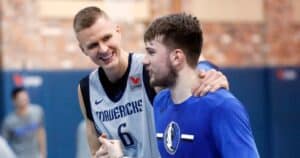
We began this article by talking about the false pretence that European players are a gamble, an uncertainty in the NBA Draft. Now, we end it by discussing the joint success of the two most well-known European prospects in recent memory. What Luke Dončić and Kristaps Porzingis have accomplished in their young careers is already incredible. If they continue on their current path, they will continue to succeed together and further decimate the bias that got Porzingis booed on draft night and caused Luka to fall to the third overall pick.
It goes without saying that for a big like Porzingis to experience success, they have to have a solid relationship with their primary ball-handler. Without a certain level of chemistry with the person passing them the ball, things will go south quickly. And Dallas is already south enough. The large majority of Porzingis’s field goals are assisted- about 70% of his two point baskets and 97% of his three point ones. The majority of the duo’s minutes are played together, so it’s safe to assume that Dončić is delivering the lion’s share of those dimes.
However, that 30% of non-assisted two pointers shows that Porzngis has the ability to create for himself, and that’s something that Dončić is aware of. Porzingis is a terrific ball-handler for a man his size. Kevin Durant called him a “unicorn,” all those years ago for a reason. In the following House of Highlights video, Porzingis can be seen creating for on his own against Jaylen Brown at 3:09, several 76ers defenders at 3:26, and Hamidou Diallo at 5:11. https://www.youtube.com/watch?v=weuDALBXlW8
For players that have only been together for one season, Dončić and Porzingis play with the familiarity of longtime teammates. They are excellent in the screen game, especially given how much of a threat Porzingis is to shoot or roll after setting a pick. Making the move to acquire Porzingis from the New York Knicks last season was a risky one for Dallas, given that he hadn’t played since suffering an Achilles tear in the 2018 season. But so far, he appears to have returned to his previous All-Star caliber. With any luck, he and Dončić will continue to grow together and lead a young Mavericks team to even greater pastures.
When thinking of the most elite offenses in basketball, the Dalla Mavericks may not immediately come to mind for most fans. Images of LeBron James lobbing it up to Anthony Davis or Giannis Antetokounmpo slicing through a web of defenders en route to a slam are likely more common mental imagery. But the numbers never lie, and Dallas holds the league’s top offensive rating by a fair margin. With some further investigation, it’s easy to see why: they shoot the ball phenomenally well, play hard at the rim, and are led by one of the most exciting young duos in the sport. But what else do the numbers say?
The Mavs do not leap out and dominae many offensive categories, but rack up many top 5s and 10s across the board. They are 4th in Assist/Turnover ratio, 2nd in Turnover percentage, and 4th in eFG% (though they trail the first-place Milwaukee Bucks by a mere 0.5%). They are also 4th in True Shooting percentage, and 6th in overall PIE, a metric created by the NBA to track a team’s production of stats that they deem conducive to winning. These placements show that Dallas is one of the most efficient teams in the league, both in their playmaking and shooting. In the modern game, efficiency is paramount.
But will it even matter? Does Dallas have any chance at the NBA’s restart? The answer is a resounding yes. Don’t let their 7th seed status fool you. With the top offense in basketball, a deadly shooting attack, a championship-winning coach, and a legitimate superstar leading the way, Dallas has all the pieces in place to be the league’s biggest breakout team down in Disney World.
All this, even with their “soft,” European players. Fascinating.
Stats are courtesy of NBA.com and Basketball Reference.

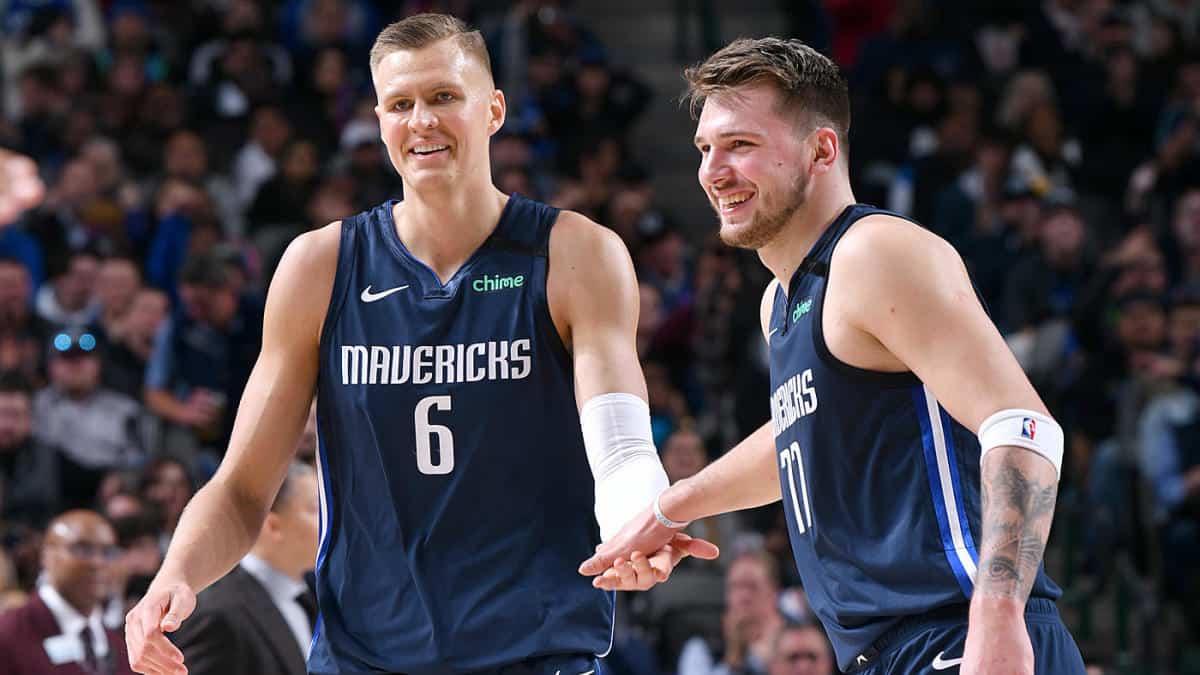
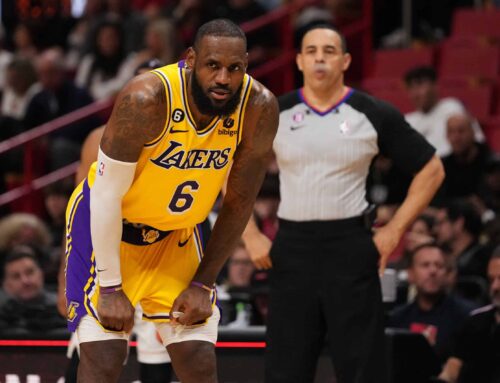
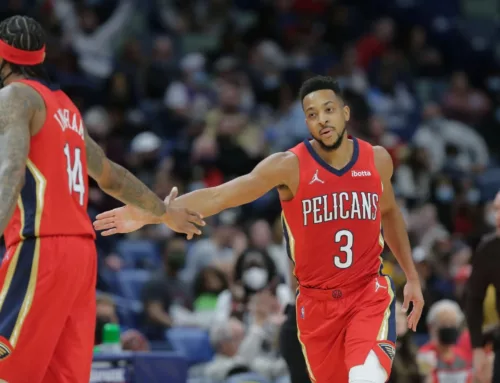
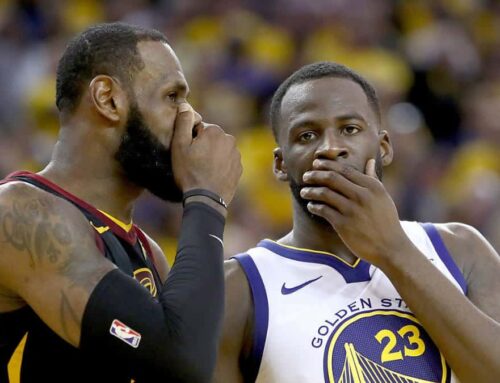
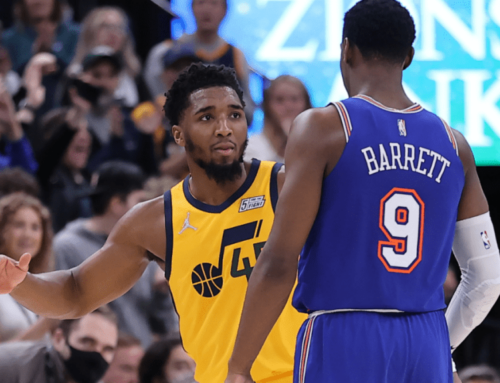
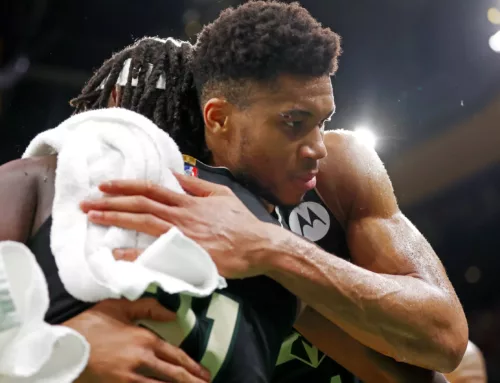
Leave A Comment